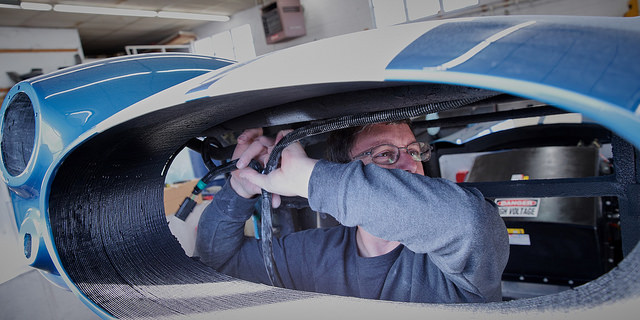To Print or Not to Print: Leading 3D Printing Expert Offers Practical Advice for Manufacturers
3D printing —or additive manufacturing as many in the industry call it—may be a relatively new term to your average American, but has actually been around for quite some time. Manufacturers first began using 3D printers over 20 years ago, primarily for rapid prototyping of new product concepts.

While the technology has yet to become a widely used alternative to traditional injection molding or cast manufacturing techniques, manufacturers willing to think outside the box are using 3D printing in creative ways, especially as printers become more advanced.
Todd Grimm is a founding advisor of the 3D Printing Association and is a leading consultant to manufacturers on the pros and cons of integrating the technology into their operations. He says, over the last decade or so, manufacturers have become more serious about using the technology as a production vehicle to make end-use, sellable goods.
“Yes, 3D printing is capable of being a production tool, however it’s just emerging now,” he said. “We still have years and years—if not decades—of advancement and development and adoption before it becomes a ubiquitous tool for all types of manufacturing.”
The U.S. Department of Energy’s Oak Ridge National Laboratory (ORNL) is one entity investing money and resources into research and development of the technology. At the 2015 North American International Auto Show this past January, ORNL revealed a Shelby Cobra (left)—the nation’s only vehicle designated a national monument—almost entirely manufactured by 3D printing. The vehicle weighs about 1,400 pounds and contains 500 pounds of printed parts made of 20 percent carbon fiber. ORNL used the Big Area Additive Manufacturing (BAAM) machine to print the car’s components, which they say prints up to 1,000 times faster than other industrial additive machines.
“Our goal is to demonstrate the potential of large-scale additive manufacturing as an innovative and viable manufacturing technology,” said Lonnie Love, leader of ORNL’s Manufacturing Systems Research group. “We want to improve digital manufacturing solutions for the automotive industry.”
But while it’s possible to make something as complex as a car out of 3D printed parts, Grimm says current applications remain mostly on the product development side of the manufacturing process.

“If your company has any activity in product development and you’re not using the technology, you are behind… way behind,” he said.
He says some companies are using it in manufacturing production, but on a limited basis.
“As rapid prototyping and the technology gets better and more capable, as materials get better and more capable, we’ve been extending the reach into tooling and other support devices for manufacturing operations,” he said.
Currently, he says manufacturers are using 3D printing for extremely low-volume, high-value components, particularly in the aerospace, defense and medical device industry sectors.
“That’s where the odds of success are most likely,” he said. “The more you move into higher volume, the more simple, inexpensive pieces, the less likely 3D printing makes sense for you.”
Grimm says it’s important to avoid making “emotional” decisions when it comes to investing or integrating 3D printing techniques into manufacturing operations.
“I highly recommend for any manufacturer to take a hard look at what it’s capable of today and make a decision if it’s suitable for the high-end production applications. And then, if it is, go for it. If not, keep it on the agenda to revisit on an annual basis because, some time in the future, it is very likely to be appropriate for an increasing number of manufacturers.”
- Category:
- GrayWay
- Manufacturing
Some opinions expressed in this article may be those of a contributing author and not necessarily Gray.
